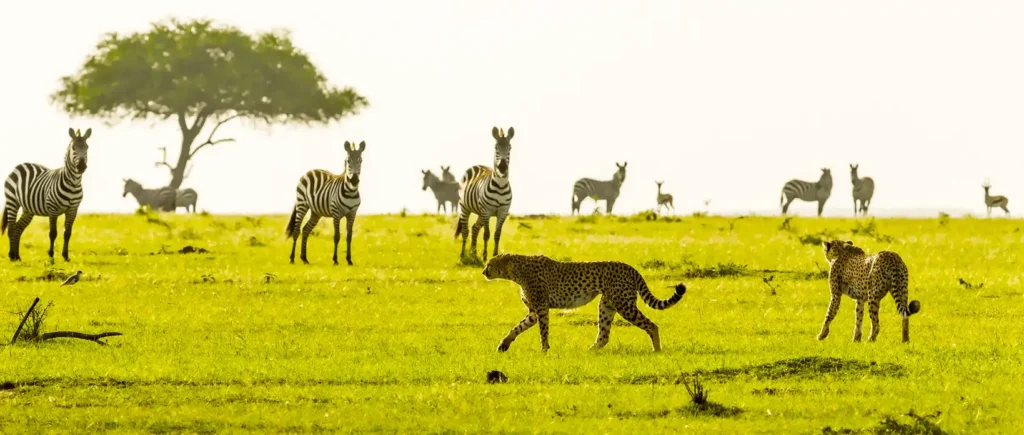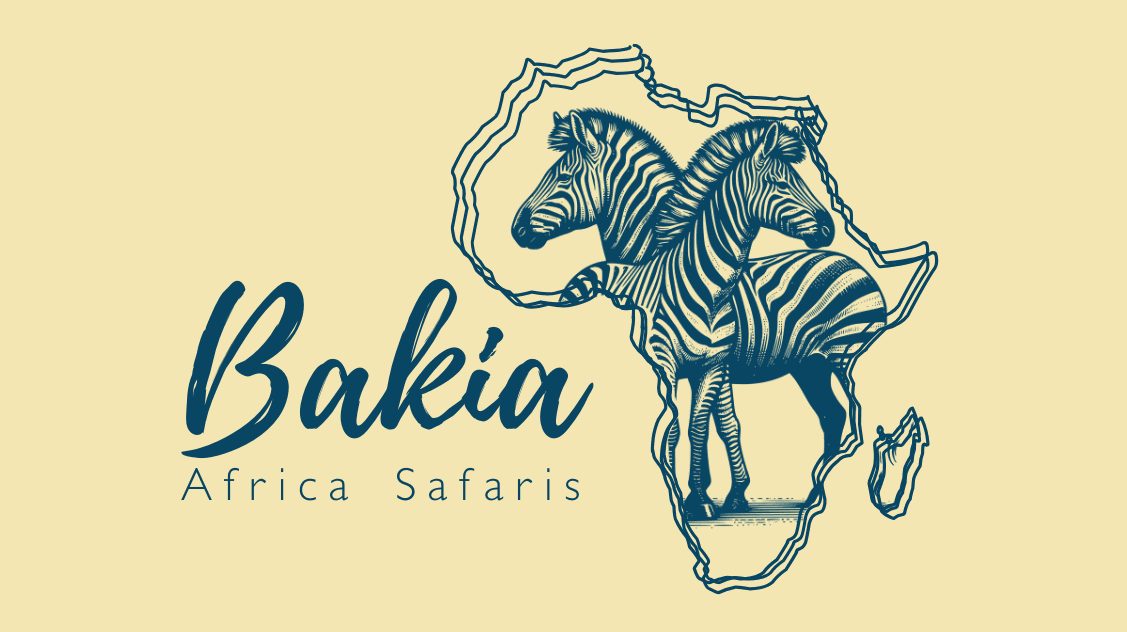Tel: +255 787 650 509 | info@bakiaafricasafaris.com
Conservation In Tanzania
Home > Conservation In Tanzania

A GUIDE TO CONSERVATION IN TANZANIA
Tanzania, renowned for its vast and breathtaking landscapes, rich biodiversity, and iconic wildlife, is a global leader in conservation. As home to some of the world’s most famous national parks, including Serengeti, Ngorongoro, and Tarangire, Tanzania attracts nature lovers and wildlife enthusiasts from across the globe. However, with its ecological wealth comes the responsibility of preserving it for future generations. At Bakia Africa Safaris, we are committed to promoting sustainable travel and supporting the conservation efforts that keep Tanzania’s natural beauty intact. This guide will help you understand Tanzania’s conservation efforts and how you, as a tourist, can play a part in safeguarding this extraordinary country.
Why Conservation in Tanzania is Crucial
Tanzania is home to unique ecosystems, from the Serengeti plains to the lush forests of the Usambara Mountains. These areas host thousands of species, many of which are found nowhere else on Earth. The country’s wildlife is not just a national treasure but a global one. Species like the African elephant, the endangered black rhino, and the cheetah depend on protected areas for survival. However, Tanzania faces increasing pressures from habitat loss, poaching, climate change, and human-wildlife conflict.
Conservation in Tanzania is essential to maintaining the delicate balance of these ecosystems. By supporting conservation efforts, Tanzania not only protects its biodiversity but also ensures that local communities can benefit from sustainable tourism and wildlife preservation, which are vital to the economy.
National Parks and Conservation Areas: The Heart of Tanzania’s Wildlife
Tanzania boasts 22 national parks and 41 game reserves, which together cover more than a quarter of the country’s land area. These protected areas are home to a stunning variety of wildlife, including the Big Five (lions, leopards, elephants, rhinos, and buffaloes), as well as rare and endangered species like the wild dog and the Grevy’s zebra. Some of the most well-known conservation areas include:
- Serengeti National Park: Famous for its annual Great Migration, where millions of wildebeest, zebras, and gazelles move across the plains in search of greener pastures. The Serengeti’s rich ecosystem is a key driver of Tanzania’s conservation efforts.
- Ngorongoro Conservation Area: A UNESCO World Heritage Site, Ngorongoro is home to the world’s largest inactive volcanic crater and serves as a sanctuary for endangered species, including black rhinos.
- Tarangire National Park: Known for its large herds of elephants and towering baobab trees, Tarangire is vital for preserving Tanzania’s wildlife corridors.
- Selous Game Reserve: One of the largest conservation areas in Africa, Selous is renowned for its diverse wildlife, including the African wild dog, hippos, and crocodiles.
These parks are integral to Tanzania’s national and international conservation efforts. Visitors who choose to explore these areas help fund vital wildlife protection programs, such as anti-poaching patrols and habitat restoration projects.
How Tourists Can Support Conservation
While visiting Tanzania’s national parks and reserves, tourists play a significant role in supporting conservation efforts. Here are some ways you can contribute to Tanzania’s sustainability goals while enjoying your trip:
- Choose Eco-friendly Tour Operators
Opt for tour companies, like Bakia Africa Safaris, that prioritize sustainability. Eco-conscious operators ensure that their tours are designed to minimize environmental impact, using sustainable vehicles, supporting local communities, and contributing to conservation initiatives. - Respect Wildlife and Natural Habitats
When on safari, always follow the guidelines set by park rangers and tour guides. Keep a safe distance from animals, refrain from making noise or disrupting wildlife, and avoid littering. Your behavior can make a huge difference in preserving the animals’ natural behaviors and their habitats. - Support Local Conservation Projects
Many of Tanzania’s national parks have local conservation projects that tourists can support directly, whether through donations, educational activities, or volunteering. Supporting community-driven wildlife conservation programs can ensure that conservation benefits extend beyond the park boundaries. - Practice Responsible Tourism
Be mindful of the local environment and communities you are visiting. Choose accommodations that are involved in sustainable practices, such as water conservation, waste management, and renewable energy use. Purchase souvenirs that are ethically sourced and support local artisans. - Contribute to Conservation Fees
A significant portion of the fees you pay for park entry, guided safaris, and other activities goes directly toward conservation programs. These fees help fund anti-poaching units, wildlife monitoring, and infrastructure that protects Tanzania’s natural resources.
Tanzania’s Role in Global Conservation
Tanzania’s commitment to conservation extends beyond its borders. The country is a partner in numerous international wildlife preservation efforts, including the Convention on International Trade in Endangered Species (CITES), which helps regulate the trade of endangered wildlife. Tanzania also collaborates with organizations like the World Wildlife Fund (WWF) and the African Wildlife Foundation (AWF) to strengthen conservation practices.
By promoting responsible wildlife tourism, Tanzania not only protects its own environment but also sets an example for other countries on how sustainable tourism can coexist with environmental conservation. The success of Tanzania’s conservation initiatives relies on the support and involvement of tourists, governments, and local communities.
The Future of Conservation in Tanzania
As more visitors flock to Tanzania, the demand for sustainable tourism continues to grow. The Tanzanian government, along with conservation organizations, is increasingly focusing on balancing tourism and wildlife protection. Initiatives such as the Wildlife Conservation Fund and various Community-based Conservation Programs are helping ensure that tourism generates lasting benefits for both wildlife and local communities.
Tanzania’s future in conservation will rely heavily on responsible tourism and international collaboration. By choosing to visit Tanzania and supporting eco-friendly tour operators like Bakia Africa Safaris, you are contributing to the preservation of one of the world’s most unique ecosystems.
Final Thoughts
Tanzania is a jewel of the natural world, and its landscapes and wildlife deserve to be cherished and preserved for generations to come. As a tourist, you have the power to make a positive impact through responsible travel practices. Whether it’s by choosing a sustainable safari operator, following park guidelines, or supporting local conservation projects, your visit plays a role in protecting Tanzania’s incredible biodiversity. At Bakia Africa Safaris, we are dedicated to offering tours that not only showcase the natural beauty of Tanzania but also contribute to the ongoing conservation efforts that help preserve it. Together, we can ensure that Tanzania remains a paradise for wildlife, nature lovers, and future generations of travelers.
Contact Us
- Bakia Africa Safaris
- Bakia Africa safaris
- bakia_africa_safaris
- info@bakiaafricasafaris.com
- +255 787 650 509
- +255 787 650 509
- Arusha, Tanzania
We Accept


